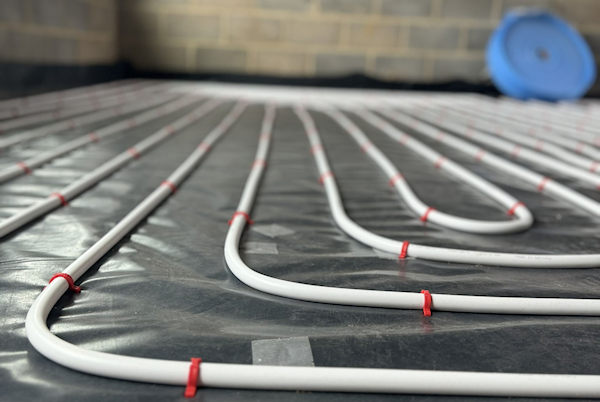
Underfloor Heating Installation. The Evolution of UFH and Things to Be Aware of as an Installer
We know that you want to be proud of every installation you do so this week’s blog looks at how best to install underfloor heating systems.
UFH (Underfloor Heating) is not a new commodity, but in recent years we have seen a surge in popularity driven by advances in technology. The first UFH systems were installed as far back as the 1970s, but these were very basic and too expensive to install in your average house. Fortunately, some major technical innovations were introduced around the 1990s, which meant UFH became more affordable and is now a very realistic option for many households.
Different Types of Underfloor Heating
There are different types of UFH systems available including:
- Solid screed construction
- Timber suspended
- Overlay systems
The type of system used will usually be determined by the environment that the UFH will be installed in. Screed applications are becoming particularly popular in new property developments.
One thing to be aware of if you are installing UFH for a customer is that the industry is mostly unregulated, meaning that the quality of products could be sub-standard, without the same level of regulations as you see with other plumbing products. Therefore, it is really important to make sure that you are using a supplier that you can trust, so that your customer does not end up with a UFH system that causes future problems.
A lot of new UFH products have come onto the market with reduced prices but as with most things, you get what you pay for and good UFH systems won’t come cheap. That doesn’t mean that they are unaffordable, just that by buying the cheapest options, you could be causing big risks regarding the repercussions of a failing UFH system.
To help you to decide on which UFH system to use and to give you some considerations to bear in mind for installation, we have provided some key Do’s and Don’ts
Do – Know where your system is coming from, due to the unregulated industry there are many cheap pipes and systems available everywhere. You need to consider that if you save some money by buying a cheaper system, if the quality is poor, you could end up losing money when it comes to rectifying issues. A good quality pipe installation should last a minimum of 50 years due to the nature of burying pipe in the floor.
Don’t – Assume that UFH will automatically heat the property, it is always recommended that a heat loss calculation is done for a room to make sure that the UFH will perform sufficiently, taking into account the heat transfer rates and insulation in the property.
Don’t – Always believe what you see, always make sure that the output listed in the brochure matches what is required in the BSEN 1264 standard and that the floor surface temperature does not exceed 29°C in living areas or 33°C in bathrooms. Any system stating over 100w/m² output is probably in breach of this limit and could damage floor covering or even be hazardous to health.
Do – Use the knowledge of your UFH supplier/manufacturer. A good UFH supplier will have an in-house qualified design team to quote and design your system and offer advice on complicated systems. If you are using a system for the first time or require any product advice, you should definitely seek the advice of the product experts.
Multipipe Ltd has been trading in UFH systems for more than 20 years and has a dedicated technical team on hand to help you on your next project. For further in-depth help on UFH systems, we recommend a great all-in-one guide to purchase on the CIBSE website which explains everything you need to know about UFH design and installation.
Alternatively, just give our friendly technical design team a call and we’ll be happy to walk you through everything to do with our UFH systems.
Email Us
Call Us





